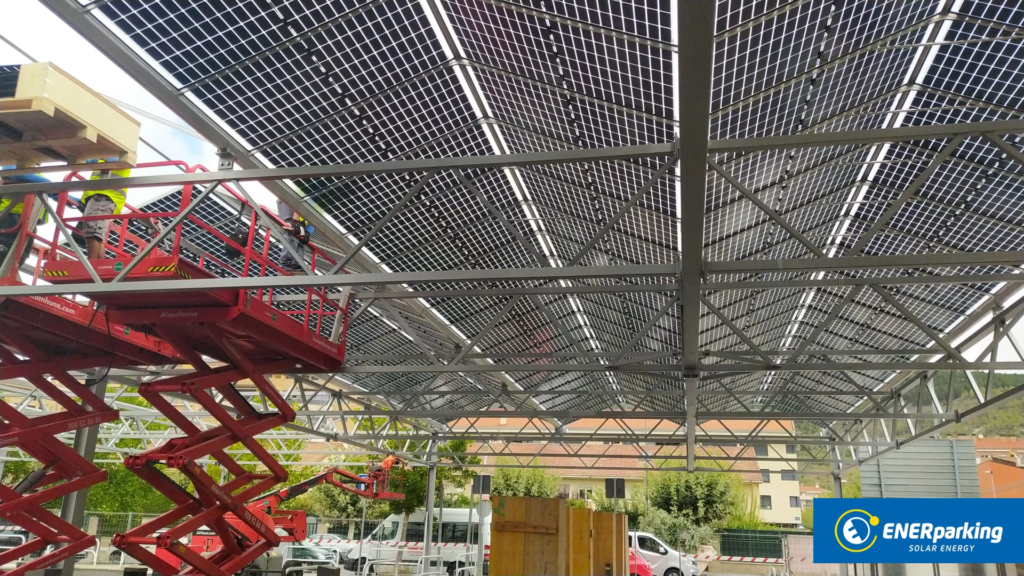The Solar Parking project in Pamplona is more than just an initiative; it’s a tangible testament to how ENERparking can transform urban spaces and reshape the way we conceive and share energy.
This Pamplona Solar Parking stands out as an exemplary case of collaboration between the private sector and public entities, achieved through a land concession involving significant private investment. This initiative marks a milestone in integrating ENERparking into urban environments, providing not only shade and safety for vehicles but also an innovative sustainability model with active private-sector participation.
The parking facility serves as a clear demonstration of ENERparking’s efficiency and versatility in action. This exceptional project not only provides shade and protection for vehicles but also represents Spain’s largest fully covered, waterproof solar installation to date, spanning an impressive 5,834 m². Additionally, it holds the title of the largest solar installation in the city of Pamplona, marking a significant achievement in the integration of solar energy into urban spaces.
Built on public-owned parking grounds, the project was realised through a public tender that included the construction and operation of the photovoltaic canopy. With 2,746 solar modules and a clearance height of 3.5 metres, this parking facility not only fulfils its essential function but also serves as a focal point for sustainable energy generation. The environmental impact is substantial, with an annual avoidance of 620 tonnes of CO₂ emissions and an impressive production of 1,365 MWh per year.

The energy generated is offered to residents and local businesses within a 2 km radius via the “collective self-consumption by proximity” model, regulated under Royal Decree RD244/2019. This model offers a host of benefits to both citizens and cities, notably allowing residents to enjoy clean energy without any initial investment. By participating in this model, citizens and public buildings gain access to locally generated, renewable energy without incurring upfront costs, thereby removing economic barriers to sustainable energy adoption. This democratised approach makes the transition to self-consumption accessible to all, strengthening community involvement in green energy generation.
From an urban perspective, this installation supports building more sustainable cities by reducing the carbon footprint, promoting energy self-sufficiency, facilitating urban transport electrification, and improving citizens’ quality of life. Additionally, by leveraging existing electrical infrastructure, environmental impacts are minimised, and integration occurs without direct costs for residents.













